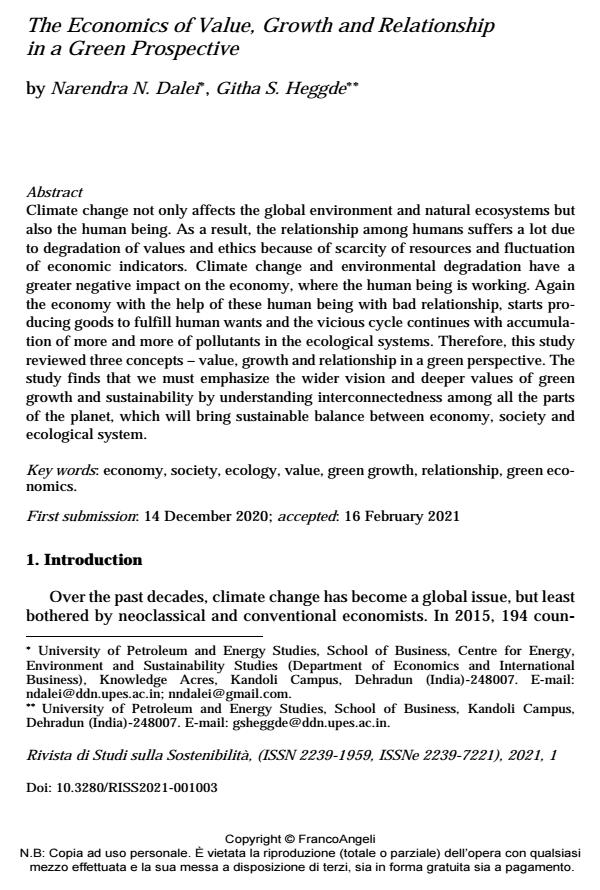The Economics of Value, Growth and Relationship in a Green Prospective
Journal title RIVISTA DI STUDI SULLA SOSTENIBILITA'
Author/s Narendra N. Dalei, Githa S. Heggde
Publishing Year 2021 Issue 2021/1
Language English Pages 13 P. 29-41 File size 86 KB
DOI 10.3280/RISS2021-001003
DOI is like a bar code for intellectual property: to have more infomation
click here
Below, you can see the article first page
If you want to buy this article in PDF format, you can do it, following the instructions to buy download credits

FrancoAngeli is member of Publishers International Linking Association, Inc (PILA), a not-for-profit association which run the CrossRef service enabling links to and from online scholarly content.
Climate change not only affects the global environment and natural ecosystems but also the human being. As a result, the relationship among humans suffers a lot due to degradation of values and ethics because of scarcity of resources and fluc-tuation of economic indicators. Climate change and environmental degradation have a greater negative impact on the economy, where the human being is work-ing. Again the economy with the help of these human being with bad relationship, starts producing goods to fulfill human wants and the vicious cycle continues with accumulation of more and more of pollutants in the ecological systems. Therefore, this study reviewed three concepts - value, growth and relationship in a green per-spective. The study finds that we must emphasize the wider vision and deeper val-ues of green growth and sustainability by understanding interconnectedness among all the parts of the planet, which will bring sustainable balance between economy, society and ecological system.
Keywords: Economy, society, ecology, value, green growth, relationship, green economics.
- Utilizing Technology for Sustainable Resource Management Solutions Kuldeep Singh, Irum Khan, pp.44 (ISBN:9798369323465)
- Socio-economic development through self-help groups in rural India – a qualitative study Vinay Kandpal, in Qualitative Research in Financial Markets /2022 pp.621
DOI: 10.1108/QRFM-10-2021-0170
Narendra N. Dalei, Githa S. Heggde, The Economics of Value, Growth and Relationship in a Green Prospective in "RIVISTA DI STUDI SULLA SOSTENIBILITA'" 1/2021, pp 29-41, DOI: 10.3280/RISS2021-001003